Amin Jalali
Learning Time-Series Representations by Hierarchical Uniformity-Tolerance Latent Balancing
Oct 02, 2025Abstract:We propose TimeHUT, a novel method for learning time-series representations by hierarchical uniformity-tolerance balancing of contrastive representations. Our method uses two distinct losses to learn strong representations with the aim of striking an effective balance between uniformity and tolerance in the embedding space. First, TimeHUT uses a hierarchical setup to learn both instance-wise and temporal information from input time-series. Next, we integrate a temperature scheduler within the vanilla contrastive loss to balance the uniformity and tolerance characteristics of the embeddings. Additionally, a hierarchical angular margin loss enforces instance-wise and temporal contrast losses, creating geometric margins between positive and negative pairs of temporal sequences. This approach improves the coherence of positive pairs and their separation from the negatives, enhancing the capture of temporal dependencies within a time-series sample. We evaluate our approach on a wide range of tasks, namely 128 UCR and 30 UAE datasets for univariate and multivariate classification, as well as Yahoo and KPI datasets for anomaly detection. The results demonstrate that TimeHUT outperforms prior methods by considerable margins on classification, while obtaining competitive results for anomaly detection. Finally, detailed sensitivity and ablation studies are performed to evaluate different components and hyperparameters of our method.
DMN-Guided Prompting: A Low-Code Framework for Controlling LLM Behavior
May 16, 2025Abstract:Large Language Models (LLMs) have shown considerable potential in automating decision logic within knowledge-intensive processes. However, their effectiveness largely depends on the strategy and quality of prompting. Since decision logic is typically embedded in prompts, it becomes challenging for end users to modify or refine it. Decision Model and Notation (DMN) offers a standardized graphical approach for defining decision logic in a structured, user-friendly manner. This paper introduces a DMN-guided prompting framework that breaks down complex decision logic into smaller, manageable components, guiding LLMs through structured decision pathways. We implemented the framework in a graduate-level course where students submitted assignments. The assignments and DMN models representing feedback instructions served as inputs to our framework. The instructor evaluated the generated feedback and labeled it for performance assessment. Our approach demonstrated promising results, outperforming chain-of-thought (CoT) prompting. Students also responded positively to the generated feedback, reporting high levels of perceived usefulness in a survey based on the Technology Acceptance Model.
AI-Enhanced Business Process Automation: A Case Study in the Insurance Domain Using Object-Centric Process Mining
Apr 24, 2025Abstract:Recent advancements in Artificial Intelligence (AI), particularly Large Language Models (LLMs), have enhanced organizations' ability to reengineer business processes by automating knowledge-intensive tasks. This automation drives digital transformation, often through gradual transitions that improve process efficiency and effectiveness. To fully assess the impact of such automation, a data-driven analysis approach is needed - one that examines how traditional and AI-enhanced process variants coexist during this transition. Object-Centric Process Mining (OCPM) has emerged as a valuable method that enables such analysis, yet real-world case studies are still needed to demonstrate its applicability. This paper presents a case study from the insurance sector, where an LLM was deployed in production to automate the identification of claim parts, a task previously performed manually and identified as a bottleneck for scalability. To evaluate this transformation, we apply OCPM to assess the impact of AI-driven automation on process scalability. Our findings indicate that while LLMs significantly enhance operational capacity, they also introduce new process dynamics that require further refinement. This study also demonstrates the practical application of OCPM in a real-world setting, highlighting its advantages and limitations.
OCPM$^2$: Extending the Process Mining Methodology for Object-Centric Event Data Extraction
Mar 13, 2025Abstract:Object-Centric Process Mining (OCPM) enables business process analysis from multiple perspectives. For example, an educational path can be examined from the viewpoints of students, teachers, and groups. This analysis depends on Object-Centric Event Data (OCED), which captures relationships between events and object types, representing different perspectives. Unlike traditional process mining techniques, extracting OCED minimizes the need for repeated log extractions when shifting the analytical focus. However, recording these complex relationships increases the complexity of the log extraction process. To address this challenge, this paper proposes a method for extracting OCED based on PM\inst{2}, a well-established process mining framework. Our approach introduces a structured framework that guides data analysts and engineers in extracting OCED for process analysis. We validate this framework by applying it in a real-world educational setting, demonstrating its effectiveness in extracting an Object-Centric Event Log (OCEL), which serves as the standard format for recording OCED, from a learning management system and an administrative grading system.
Segment, Shuffle, and Stitch: A Simple Mechanism for Improving Time-Series Representations
May 30, 2024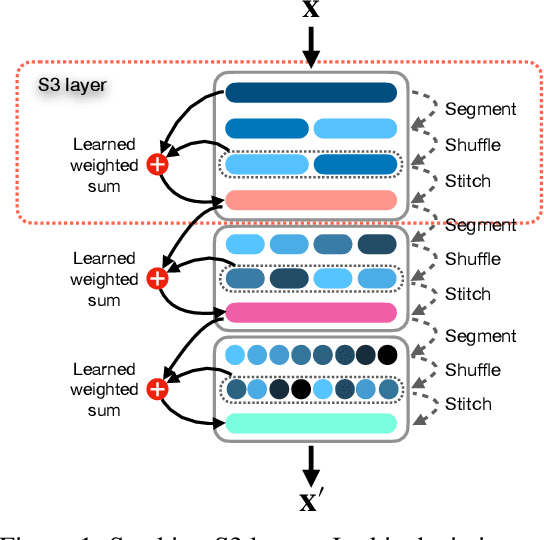
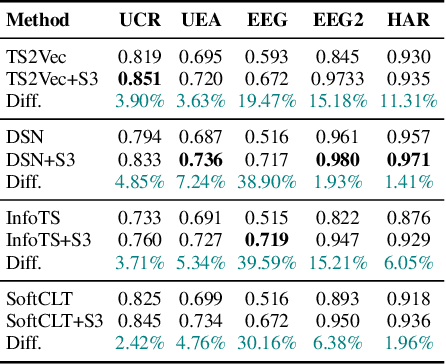
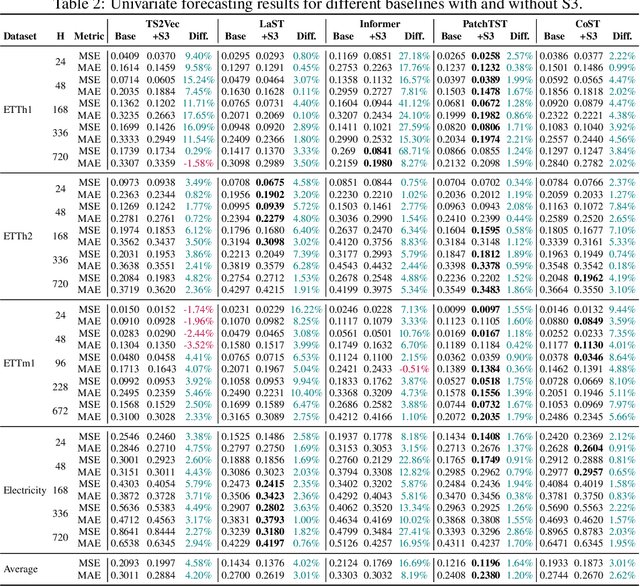

Abstract:Existing approaches for learning representations of time-series keep the temporal arrangement of the time-steps intact with the presumption that the original order is the most optimal for learning. However, non-adjacent sections of real-world time-series may have strong dependencies. Accordingly we raise the question: Is there an alternative arrangement for time-series which could enable more effective representation learning? To address this, we propose a simple plug-and-play mechanism called Segment, Shuffle, and Stitch (S3) designed to improve time-series representation learning of existing models. S3 works by creating non-overlapping segments from the original sequence and shuffling them in a learned manner that is the most optimal for the task at hand. It then re-attaches the shuffled segments back together and performs a learned weighted sum with the original input to capture both the newly shuffled sequence along with the original sequence. S3 is modular and can be stacked to create various degrees of granularity, and can be added to many forms of neural architectures including CNNs or Transformers with negligible computation overhead. Through extensive experiments on several datasets and state-of-the-art baselines, we show that incorporating S3 results in significant improvements for the tasks of time-series classification and forecasting, improving performance on certain datasets by up to 68\%. We also show that S3 makes the learning more stable with a smoother training loss curve and loss landscape compared to the original baseline. The code is available at https://github.com/shivam-grover/S3-TimeSeries .
Adversarial Lagrangian Integrated Contrastive Embedding for Limited Size Datasets
Oct 06, 2022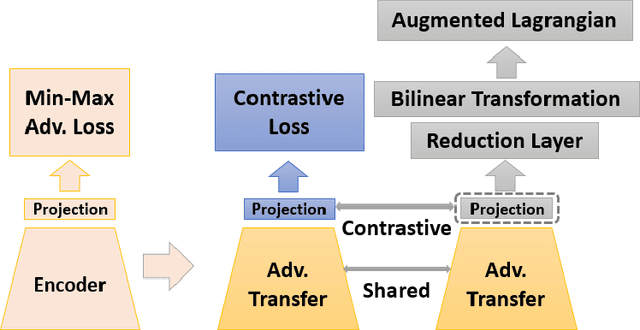
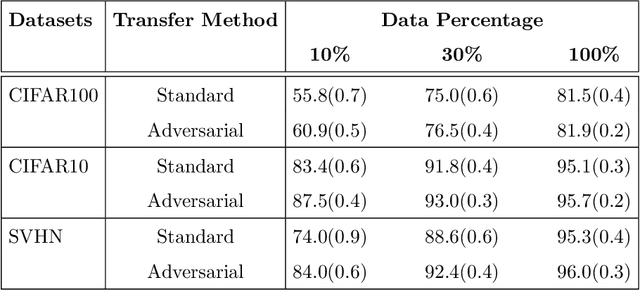

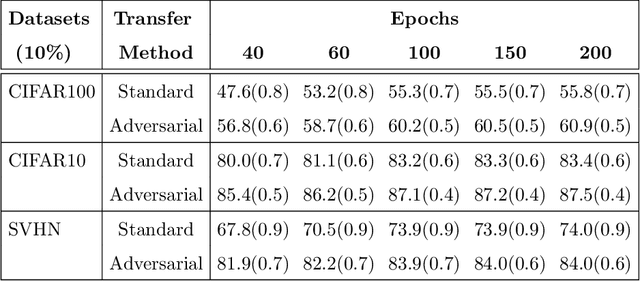
Abstract:Certain datasets contain a limited number of samples with highly various styles and complex structures. This study presents a novel adversarial Lagrangian integrated contrastive embedding (ALICE) method for small-sized datasets. First, the accuracy improvement and training convergence of the proposed pre-trained adversarial transfer are shown on various subsets of datasets with few samples. Second, a novel adversarial integrated contrastive model using various augmentation techniques is investigated. The proposed structure considers the input samples with different appearances and generates a superior representation with adversarial transfer contrastive training. Finally, multi-objective augmented Lagrangian multipliers encourage the low-rank and sparsity of the presented adversarial contrastive embedding to adaptively estimate the coefficients of the regularizers automatically to the optimum weights. The sparsity constraint suppresses less representative elements in the feature space. The low-rank constraint eliminates trivial and redundant components and enables superior generalization. The performance of the proposed model is verified by conducting ablation studies by using benchmark datasets for scenarios with small data samples.
Object Type Clustering using Markov Directly-Follow Multigraph in Object-Centric Process Mining
Jun 28, 2022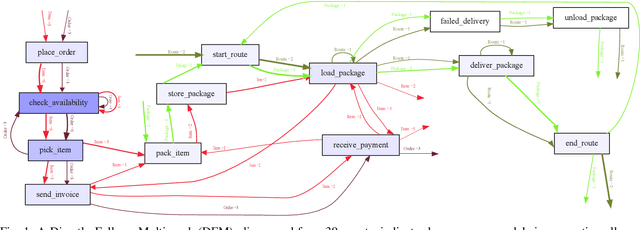
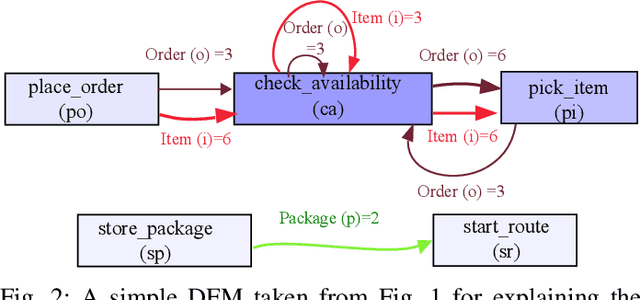
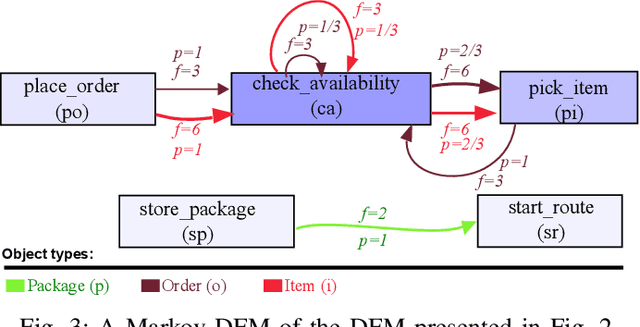
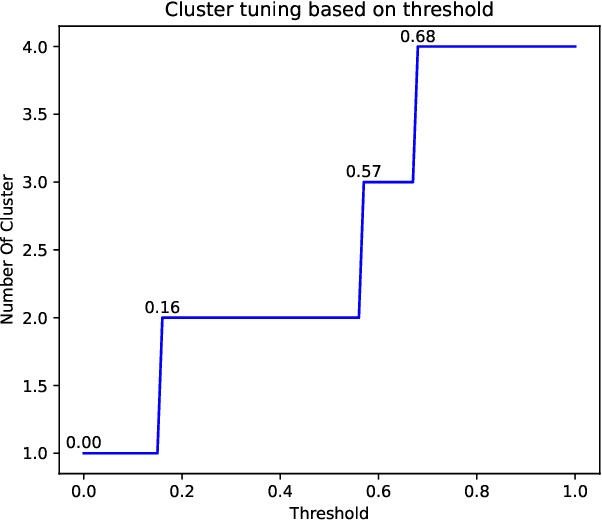
Abstract:Object-centric process mining is a new paradigm with more realistic assumptions about underlying data by considering several case notions, e.g., an order handling process can be analyzed based on order, item, package, and route case notions. Including many case notions can result in a very complex model. To cope with such complexity, this paper introduces a new approach to cluster similar case notions based on Markov Directly-Follow Multigraph, which is an extended version of the well-known Directly-Follow Graph supported by many industrial and academic process mining tools. This graph is used to calculate a similarity matrix for discovering clusters of similar case notions based on a threshold. A threshold tuning algorithm is also defined to identify sets of different clusters that can be discovered based on different levels of similarity. Thus, the cluster discovery will not rely on merely analysts' assumptions. The approach is implemented and released as a part of a python library, called processmining, and it is evaluated through a Purchase to Pay (P2P) object-centric event log file. Some discovered clusters are evaluated by discovering Directly Follow-Multigraph by flattening the log based on the clusters. The similarity between identified clusters is also evaluated by calculating the similarity between the behavior of the process models discovered for each case notion using inductive miner based on footprints conformance checking.
Evaluating Perceived Usefulness and Ease of Use of CMMN and DCR
Mar 23, 2021



Abstract:Case Management has been gradually evolving to support Knowledge-intensive business process management, which resulted in developing different modeling languages, e.g., Declare, Dynamic Condition Response (DCR), and Case Management Model and Notation (CMMN). A language will die if users do not accept and use it in practice - similar to extinct human languages. Thus, it is important to evaluate how users perceive languages to determine if there is a need for improvement. Although some studies have investigated how the process designers perceived Declare and DCR, there is a lack of research on how they perceive CMMN. Therefore, this study investigates how the process designers perceive the usefulness and ease of use of CMMN and DCR based on the Technology Acceptance Model. DCR is included to enable comparing the study result with previous ones. The study is performed by educating master level students with these languages over eight weeks by giving feedback on their assignments to reduce perceptions biases. The students' perceptions are collected through questionnaires before and after sending feedback on their final practice in the exam. Thus, the result shows how the perception of participants can change by receiving feedback - despite being well trained. The reliability of responses is tested using Cronbach's alpha, and the result indicates that both languages have an acceptable level for both perceived usefulness and ease of use.
Persistent Reductions in Regularized Loss Minimization for Variable Selection
Nov 30, 2020
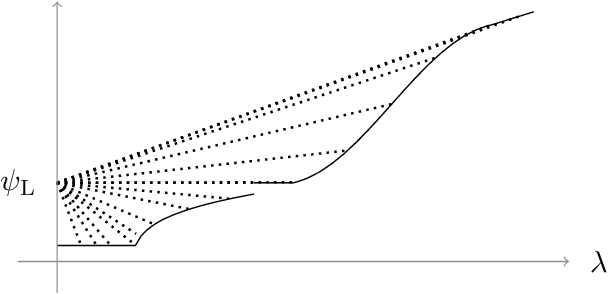
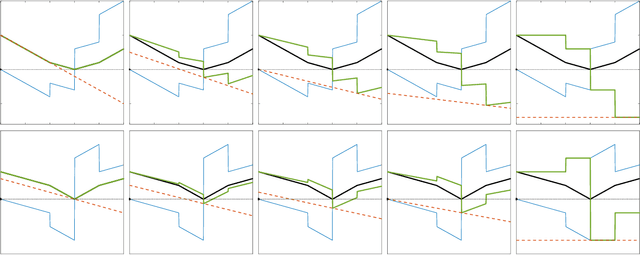
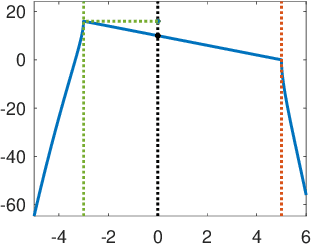
Abstract:In the context of regularized loss minimization with polyhedral gauges, we show that for a broad class of loss functions (possibly non-smooth and non-convex) and under a simple geometric condition on the input data it is possible to efficiently identify a subset of features which are guaranteed to have zero coefficients in all optimal solutions in all problems with loss functions from said class, before any iterative optimization has been performed for the original problem. This procedure is standalone, takes only the data as input, and does not require any calls to the loss function. Therefore, we term this procedure as a persistent reduction for the aforementioned class of regularized loss minimization problems. This reduction can be efficiently implemented via an extreme ray identification subroutine applied to a polyhedral cone formed from the datapoints. We employ an existing output-sensitive algorithm for extreme ray identification which makes our guarantee and algorithm applicable in ultra-high dimensional problems.
New Computational and Statistical Aspects of Regularized Regression with Application to Rare Feature Selection and Aggregation
Apr 10, 2019
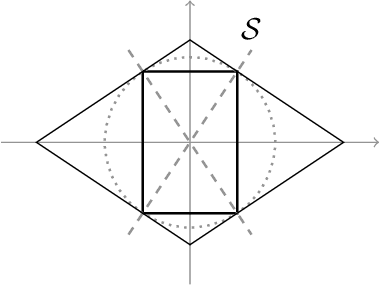

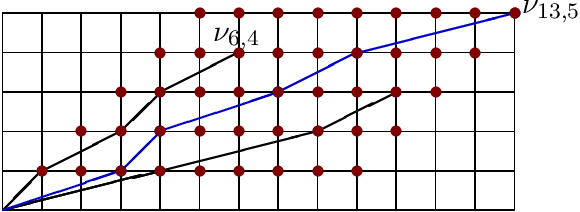
Abstract:Prior knowledge on properties of a target model often come as discrete or combinatorial descriptions. This work provides a unified computational framework for defining norms that promote such structures. More specifically, we develop associated tools for optimization involving such norms given only the orthogonal projection oracle onto the non-convex set of desired models. As an example, we study a norm, which we term the doubly-sparse norm, for promoting vectors with few nonzero entries taking only a few distinct values. We further discuss how the K-means algorithm can serve as the underlying projection oracle in this case and how it can be efficiently represented as a quadratically constrained quadratic program. Our motivation for the study of this norm is regularized regression in the presence of rare features which poses a challenge to various methods within high-dimensional statistics, and in machine learning in general. The proposed estimation procedure is designed to perform automatic feature selection and aggregation for which we develop statistical bounds. The bounds are general and offer a statistical framework for norm-based regularization. The bounds rely on novel geometric quantities on which we attempt to elaborate as well.
 Add to Chrome
Add to Chrome Add to Firefox
Add to Firefox Add to Edge
Add to Edge